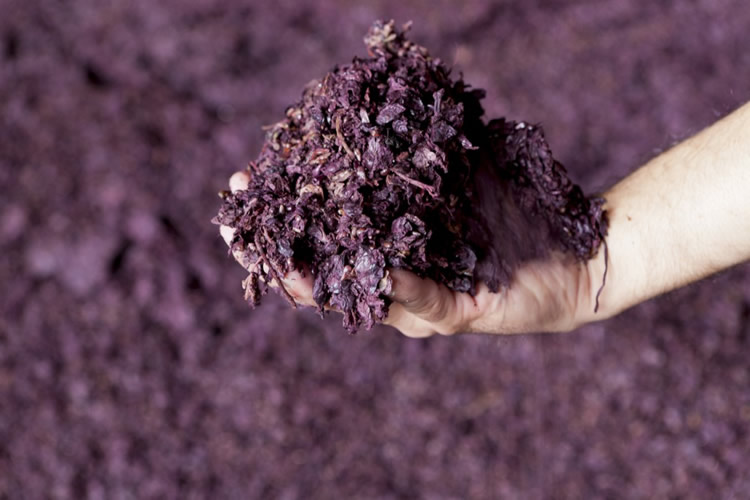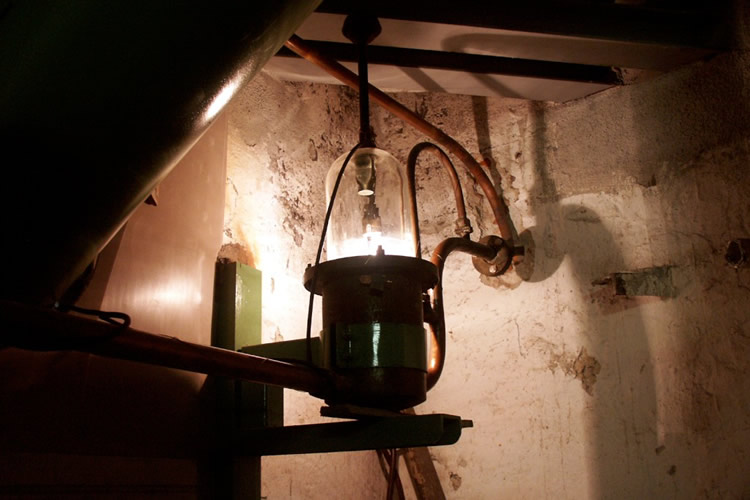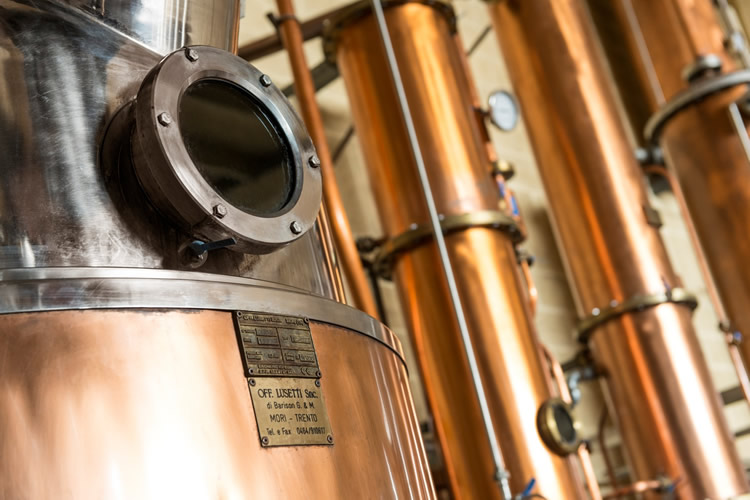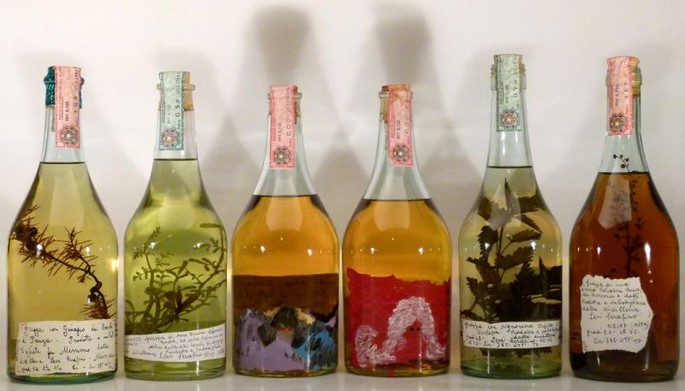The Acquavitai (Grappa masters) University was created in Piedmont in 1600, a clear sign of the ancient and important tradition of distillation and the production of grappa in the region, which was mentioned in the fifteenth century.
Grappa is obtained from marc, the peels of grapes when they are separated from either must or wine. Grappa is exclusively an Italian liquor according to tradition, culture, and law
The noble Nebbiolo grape pomace, the precious peels of Dolcetto and Barbera, the aromatic essences of Moscato but also the flavors of Grignolino, Freisa, Malvasia, Brachetto, Ruché, Cortese, Erbaluce and Arneis are the main vines.

Today, in Piedmont, the alembic stills in operation are counted in twenty distilleries concentrated mainly in the southern part of the region, where the major vineyards are; But the total number of grappa brands are over one hundred plus several prestigious businesses that cater to distilleries producing grappa with their own vinasse. Regional production of vinasse exceeds half a million quintals but more than 20% is not used, as quality selection is very strict in order to get one of the best Grappa in Italy.

Several are the methods of distillation: the so-called continuous process is the most used today, especially on an industrial scale; however, steam stills, direct fire or double boiler are often used in small businesses, where the Piedmontese tradition is best represented. At the end of the day, however, the master distiller is the one making the difference between a good grappa and a lesser one. He chooses the starting pomace from the best vineyards, chasing excellence hidden in fine wines and discovering the pomace that can deliver a great grappa, then, during distillation, he defines the heads and tails cutting, ie the first and the last fraction of the distillate, to extract the heart of each fragrance.

Grappa needs to be cared for and tamed to get to its sophistication. What comes just out of the still has a powerful scent that invades your sense of smell and taste and reveals all the hidden fragrances; resting in stainless steel or in wooden tanks grappa will soften while retaining its peculiar vigor, while the Moscato grappa acquires with time his special fruit and herb bouquet. Before reaching the bottle, Piedmontese grappa is therefore increasingly refined over a period time; when aging in wood, durmast or apple, pear, acacia , ash, mulberry, juniper and cherry essences wood are almost always used getting interesting and delightful results.
Here are some of the most well-known grappa distilleries:
- Grapperia Artigianale Alì
- Distilleria Beccaris
- Distillerie Berta
- Distilleria Dellavalle
- Distilleria Francoli
- Distilleria Gualco
- Distilleria Levi Serafino
- Distilleria Magnoberta
- Distilleria Marolo
- Distilleria Mazzetti d'Altavilla
- Distilleria Montanaro
- Distilleria Revel Chion
- Distilleria Rovero
- Distilleria San Tommaso
- Distilleria Sibona
- Torino Distillati
- Distilleria Villa Rosati
For more information: www.istitutograppapiemonte.it






